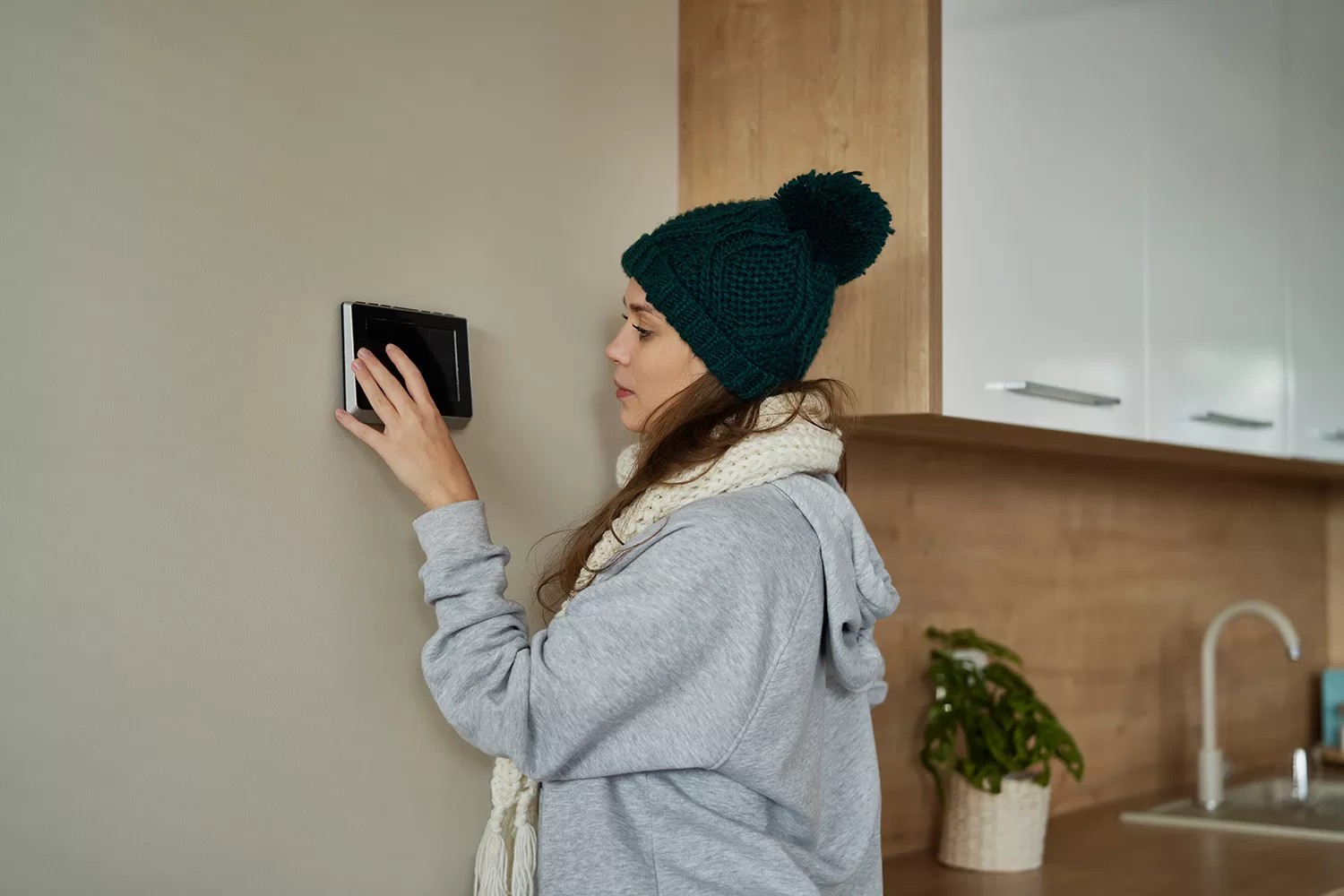
A furnace not working in the middle of a cold northside Indianapolis winter isn’t just inconvenient—it’s an urgent problem that can leave your home uncomfortable and unsafe. Understanding common furnace issues, their signs, and possible causes can help you better describe them to an HVAC professional if you need furnace repairs.
Thermostat Issues
The thermostat is the control center of your furnace, signaling when it should turn on and off. The furnace won’t respond as expected if it’s not functioning properly.
Signs of Thermostat Problems:
- Blank Display: The thermostat’s screen is blank or faded.
- No Furnace Response: Adjusting the temperature doesn’t trigger the furnace.
Possible Causes:
- Dead or weak batteries in the thermostat.
- Wiring issues prevent communication between the thermostat and the furnace.
- Malfunctioning internal sensors in the thermostat.
Clogged or Dirty Air Filters
HVAC filters trap dust, allergens, and debris to maintain clean airflow. Left over time, they can become clogged, restricting airflow and causing the furnace to overheat or stop functioning.
Signs of a Dirty Filter:
- Weak Airflow: Reduced or no airflow from vents.
- Higher Energy Bills: The furnace works harder, increasing energy consumption.
- Dusty Environment: Excess dust near vents or throughout the home.
Possible Causes:
- Lack of regular filter replacement.
- The home has high dust or debris levels, particularly in larger households, those with pets, or during renovation projects.
Power Supply Problems
Furnaces rely on a consistent power supply to function. Electrical issues can disrupt this, leaving the furnace unresponsive or malfunctioning.
Signs of Power Supply Problems:
- No Furnace Operation: The furnace doesn’t turn on at all, and there’s no sound of activity.
- Unresponsive Thermostat: The thermostat display is blank or unresponsive.
- No Blower or Ignition Sounds: You don’t hear the blower motor starting or the ignition sequence clicking.
Possible Causes:
- Tripped Circuit Breaker: A breaker in your home’s electrical panel has tripped, cutting power to the furnace.
- Faulty Power Switch: The furnace’s power switch (often near the unit) may be accidentally turned off or malfunctioning.
- Wiring or Control Board Issues: Loose connections, damaged wires, or a faulty control board could interrupt power to the furnace’s components.
Mechanical Wear and Tear
Over time, furnace components like belts, motors, and bearings can wear out, reducing efficiency or causing complete failure.
Signs of Mechanical Issues:
- Unusual Noises: Banging, squealing, or rattling sounds.
- Frequent Cycling: The furnace turns on and off too often without effectively heating.
- Reduced Airflow: Inconsistent or weak air distribution.
Possible Causes:
- Blower motor or fan belt damage.
- Loose or misaligned components due to regular use.
- Airflow restrictions that cause overheating.
Cracked Heat Exchanger
The heat exchanger separates combustion gases from the warm air delivered to your home. A crack can lead to carbon monoxide leaks and reduced furnace performance.
Signs of a Cracked Heat Exchanger:
- Strange Smells: Metallic or formaldehyde-like odors near the furnace.
- Carbon Monoxide Symptoms: Headaches, nausea, or flu-like symptoms in occupants.
- Lukewarm Air: The furnace struggles to heat effectively.
Possible Causes:
- Overheating due to restricted airflow or dirty filters.
- Regular wear and tear, especially in older furnaces.
- Poor/lack of maintenance leads to undetected stress fractures.
Limit Switch Problems
The limit switch ensures your furnace operates safely by turning off the burners if the heat exchanger gets too hot. It also controls the blower fan.
Signs of a Faulty Limit Switch:
- Blower Runs Continuously: The blower doesn’t shut off, even when the furnace stops heating.
- Furnace Overheats: The burners don’t shut off in time, causing overheating.
- No Blower Operation: The furnace heats up, but the blower fan doesn’t circulate the air.
Possible Causes:
- The limit switch is stuck in the “On” position.
- Electrical or sensor malfunctions.
- Prolonged overheating damages the switch.
Blocked or Leaky Ducts
Ductwork issues can disrupt airflow, reducing the efficiency of your heating system and making it seem like your furnace isn’t working.
Signs of Duct Problems:
- Uneven Heating: Some rooms are warmer or colder than others.
- Weak Airflow: Reduced air pressure from vents.
- Higher Energy Bills: The furnace runs longer to compensate for lost airflow.
Possible Causes:
- Leaks or holes in ductwork allow air to escape.
- Blockages from debris or improperly installed ducts.
- Disconnected duct sections.
Ignition or Pilot Light Problems
Gas furnaces use a pilot light or an electronic ignition system to ignite the burners. When these components fail, the furnace won’t produce heat.
Signs of Ignition Problems:
- Pilot Light Out: The pilot light is out or won’t stay lit for older furnaces.
- Clicking Noises: Repeated clicking without ignition.
- No Heat: The furnace cycles on but doesn’t blow warm air.
Possible Causes:
- A faulty thermocouple in furnaces with pilot lights.
- Dirty or worn-out igniters in modern electronic ignition systems.
- Gas supply issues or blockages in the burner assembly.
Call Precision Comfort Systems for Furnace Repairs
Precision Comfort Systems is here to help if your furnace is not working. Our licensed technicians ensure your home stays warm and comfortable, from diagnosing issues to making expert repairs. Schedule furnace repairs today or call us at 317.867.2665 for fast and reliable precision home comfort.
